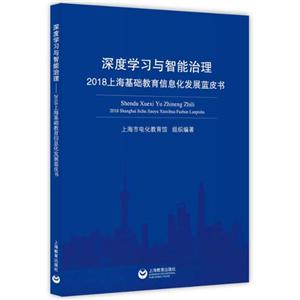暨南大学法律评论-(第四卷)

|
暨南大学法律评论-(第四卷)作者:朱义坤 开 本:16开 书号ISBN:9787566813329 定价:55.0 出版时间:2015-02-01 出版社:暨南大学出版社 |
暨南大学法律评论-(第四卷) 内容简介
《暨南大学法律评论(第四卷)》为暨南大学法学院的论文结集,主要涉及知识产权法相关知识,包括粤港澳海关知识产权保护机制比较研究、专利制度的自然权利正当性解读、著作权法对思想选择性的保护、知名服务特有名称认定与知识产权侵权损害赔偿要件探讨等内容,还有诉讼实务、各科专论等部分,从不同的方面探讨了知识产权学科内容,具有较高出版价值。
暨南大学法律评论-(第四卷) 目录
外文特稿Legal Reform and Arbitmtion in China:A Path-dependent:Perspective
知识产权研究
粤港澳海关知识产权保护机制比较研究
——以海关与其他知识产权保护机关的职权划分与衔接为中心
专利制度的自然权利正当性解读
——兼评专利功利论
试述著作权法对思想选择性的保护
知名服务特有名称认定与知识产权侵权损害赔偿要件探讨
诉讼实务
论侦查阶段犯罪嫌疑人涉案财产的保护
论对我国民事公益诉讼请求的抉择
论检察机关对行政执法活动的法律监督
广东家事审判实践的探究
——兼议对我国反家暴立法的启示
行政诉讼审前准备程序对庭审程序的价值及其实现路径
商事登记改革
浅析我国商事登记改革之取消法定*低资本额制度
——以深圳市前海新区商事登记制度改革为鉴
商事登记制度安全价值的欠缺及其补救
司法实践中公司法人人格否认制度探究
——以永发公司诉和润公司合同纠纷案为例
认缴资本制改革下公司法人人格否认制度将何去何从
论“资本显著不足”的适用
各科专论
关于财产权,我们到底知道些什么
西部大开发税收优惠实施的博弈分析
现代西方社会正义观释析
增强社会组织人权保障功能的对策研究
论行业协会自治权和国家干预的冲突与协调
论现行增值税制的纳税人权利保障
——从营业税改征增值税试点说起
供电企业配合行政机关停电行为的法律分析
应急强制性指令措施法理诠释及其法治构想
突破物债二元思维定势——虚拟财产权是信息财产权
我国特殊动产物权变动规则及其对抗性问题
缔约过失中的机会利益损害赔偿问题研究
意思表示解释的二元体系
论见义勇为的民法规制
——兼评《深圳市助人行为保护条例草案征集意见稿》
论欧盟能源应急制度中的国际合作及对中欧合作的思考
《法律适用法》第4l条之争议及完善
一国两制
从《基本法》立场检视香港行政与立法的冲突
论中央与香港特区的司法关系
法学教育
刑法学教学的目标和基本方法
以需求为导向的在职法律硕士培养模式研究
暨南大学法律评论-(第四卷) 节选
《暨南大学法律评论(第四卷)》: practices of arbitration institutions. However,the promulgation of the AL in 1994 virtually provided a new legal framework for Chinese arbitration. It is viewed as a milestone in Chinese arbitration history and in the development of the Chinese legal system. It provided a regulatory framework for the development of arbitration in China. The AL is considered a piece of modern arbitration legislation-It outlined modern arbitration principles including party autonomy, independent arbitration and the finality of arbitral awards. It confirmed the legal status of foreign-related arbitration and opened the door to establishing a modern domestic arbitration system in China. After the implementation of the AL, a number of domestic arbitration commissions were established all over China. It can be concluded that at the regulatory level, the Chinese AL generally converged with suitable and modern arbitration rules and practice. However, when we look into the details of the institutions, rules and practices of the Chinese administrative system, the three features of the path determined in the first critical juncture still remain. 3. 2. 1 Lack of Independent of Arbitration Institutions Article 8 of the AL 1994 provides that arbitration shall be carried out independently and shall be free from interference of administrative organs, social organizations or individuals. ~However, the reality is not exactly consistent with the requirement of the law. The nature of the FATC had a profound historical influence on the development of modem arbitration infrastructure in China after the Culture Revolution. In February 1980, the State Council issued "Notice Concerning the Conversion of the FTA Commission into the Foreign Economic and Trade Arbitration Commission (FETAC)" ,which re-established the FYAC but renamed it as FETAC. In June 1988, the FETAC amended its name to the CIETAC. However, the CIETAC was not separated from the Legal Department of the CCPIT until 2002 when it was registered as an independent legal institution. Even if the CIETAC was legally an independent arbitration body, it naturally was a public institution. It was not totally independent and had to consider the government benefit. ……
法律
在线阅读
- 最新内容
- 相关内容
- 网友推荐
- 图文推荐
| [高考] 2022 西安电子科技大学《软件工程》大作业答案 (2022-04-25) |
| [家长教育] 孩子为什么会和父母感情疏离? (2019-07-14) |
| [教师分享] 给远方姐姐的一封信 (2018-11-07) |
| [教师分享] 伸缩门 (2018-11-07) |
| [教师分享] 回家乡 (2018-11-07) |
| [教师分享] 是风味也是人间 (2018-11-07) |
| [教师分享] 一句格言的启示 (2018-11-07) |
| [教师分享] 无规矩不成方圆 (2018-11-07) |
| [教师分享] 第十届全国教育名家论坛有感(二) (2018-11-07) |
| [教师分享] 贪玩的小狗 (2018-11-07) |






